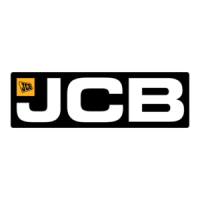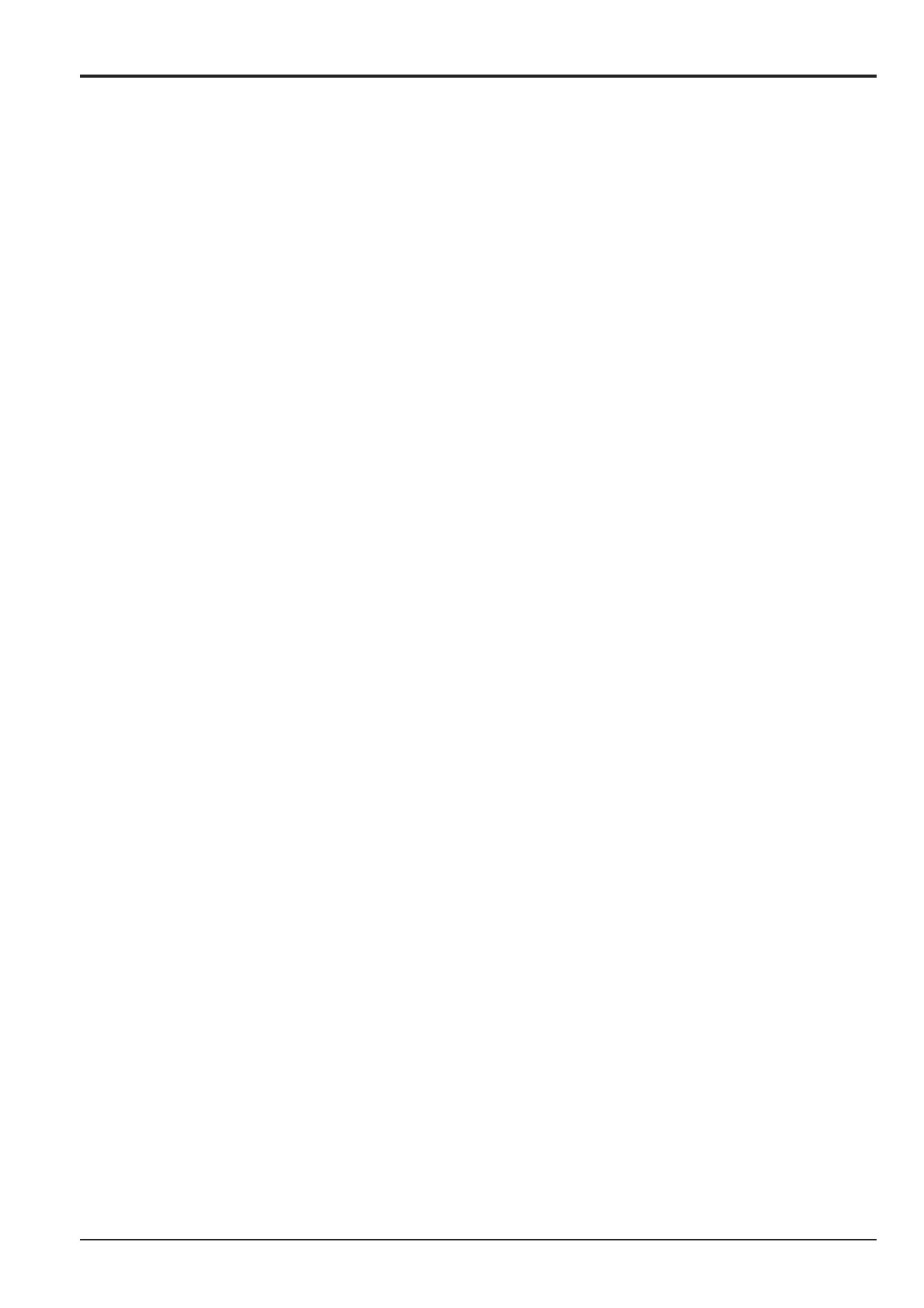10 - 5
Operation (cont’d)
Pilot Pump (Pp)
As the pump gears revolve, oil from the inlet port Y is
trapped between the gears and the housing and carried to
the outlet port Z.
Regulator
The function of each regulator is to maximise the efficiency
of its associated pump circuit by making it respond to
system demand i.e. adjusting the output flow to satisfy the
changing requirements of the machine services. This is
achieved by varying the angle of the pump swash plate.
The following description refers to pump P1. The circuit for
pump P2 functions in exactly the same way.
Flow Control
Pump P1 pressure is routed to piston 32, regulator piston 24
(small diameter chamber ‘a’) and spool 40. Pump P2
pressure is also routed to piston 32. Pilot pump Pp pressure
and horsepower control signal K (which is derived from Pp
pressure and related to the operating mode selected)
produce control pressure PC which is equal to 5% of total
pump pressure (P1 + P2).
Pressure PC, routed to piston 38, increases with pump
pressure. The piston moves spool 40 to the left to direct
pump P1 pressure to the large diameter chamber ‘A’ of
regulator piston 24. This causes piston 24 to move to the
right to reduce the swash plate angle and decrease oil flow.
Bridging piece 29, connected to piston 24, compresses
springs 43/44 to act against PC pressure through piston 38.
When PC pressure and the pressure of springs 43/44 are
equal the regulator piston stops moving.
Pressure PC decreases as pump pressure falls and springs
43/44 cause spool 40 to move to the right, connecting
chamber ‘A’ of regulator piston 24 to the case drain. P1
pressure at chamber ‘a’ causes regulator piston 24 to move
to the left to increase the swash plate angle and increase oil
flow. When pressure PC and the pressure of springs 43/44
are equal the regulator piston stops moving.
Negative Control
When the pump output is not being used (or is at a very low
rate) pressure signal A, derived from the main control valve,
acts on piston 38 in the same way as pressure signal PC,
described under Flow Control, to minimise oil flow.
Horsepower Control
The operation of the pump is based on the principle that at a
given horsepower setting:
“pressure x output flow rate = constant”
The setting can be varied using the signal K as described
under Flow Control. Signal K is controlled by the Solenoid
Proportional Pressure Control valve (SPPC), the output of
which is determined by electric signals according to the
working mode selected.
Maximum Flow Cut
When the maximum flow cut signal B is present, it acts on
piston 54 to operate spool 40 via piston 38, as described
under Flow Control. Due to the diameter of piston 54 being
smaller than that of piston 38, maximum flow is 65% of that
obtainable under normal flow control conditions.
Section E Hydraulics
9803/6410
Section E
10 - 5
Issue 1
Hydraulic Pump/Regulator

